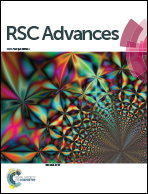Synthesis of porous ZnO based materials using an agarose gel template for H2S desulfurization
Abstract
This work describes the synthesis and characterization of pure ZnO and Ni-doped ZnO materials using agarose gel as a template for H2S desulfurization. H2S gas is not only harmful to the environment, but also corrosive to metals and poisonous to fuel reformer and fuel cell catalysts. Removal of H2S is an important step in fuel processing technology. This synthetic approach resulted in highly porous network ZnO based sorbent materials. The phase structure and morphology of these two materials were characterized by X-ray diffraction (XRD), scanning electron microscopy (SEM), transmission electron microscopy (TEM), Brunauer, Emmett and Teller (BET) surface area measurements, and mercury porosimetry. The H2S desulfurization performance of the as-synthesized ZnO and Ni-doped ZnO materials versus commercial ZnO was studied in a simulated fuel processing operation at 400 °C with an initial H2S concentration of 400 ppmv. It is shown that the sulfur adsorption capacity is greatly affected by the size and morphology of the particles. Desulfurization analysis revealed that commercial ZnO exhibits a low saturation capacity of 245 mg S per g while as-synthesized ZnO has a capacity of 457 mg S per g. Notably, when ZnO was doped with 4 wt% Ni, the sorbent capacity increased still further to 730 mg S per g.


 Please wait while we load your content...
Please wait while we load your content...